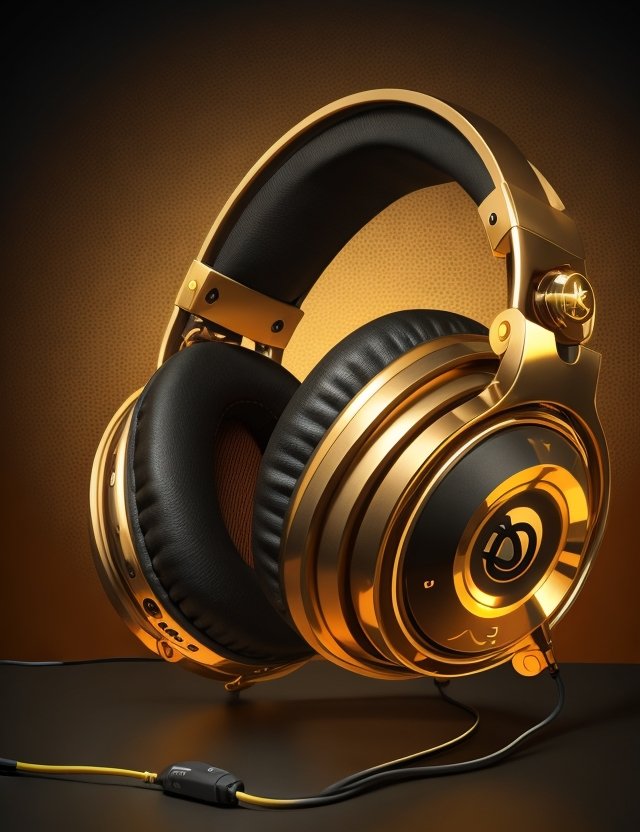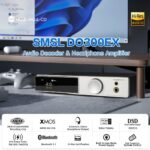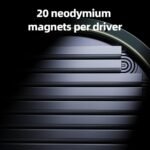Hey there! Have you ever heard of planar magnetic headphones? If not, you’re in for a treat! Planar magnetic headphones are an audio listening device with incredible sound quality and clarity. These headphones use a unique technology for more precise and accurate audio reproduction, resulting in an immersive listening experience.
If you’re curious to learn more about planar magnetic headphones and how they work, you’ve come to the right place. In this article, we’ll dive into the details of this fascinating technology, explore its benefits, and discuss why it’s becoming increasingly popular among audio enthusiasts. So, buckle up and get ready to discover the wonders of planar magnetic headphones!
Overview of Planar Magnetic Headphones
Planar magnetic headphones are an audio device that utilizes unique technology to deliver accurate and precise sound reproduction. They are known for their exceptional audio quality and are popular among audiophiles and professionals in the music industry. In this article, we will explore how planar magnetic headphones work, discuss their advantages and disadvantages, and provide an overview of the factors to consider when choosing a pair. Additionally, we will compare planar magnetic headphones to other types of headphones, highlight top brands and models, explain how to use and maintain them properly and examine their applications in professional audio settings and personal listening. We will also address common misconceptions and discuss future planar magnetic headphone technology developments.
How do planar magnetic headphones work?
Planar magnetic headphones rely on a unique driver design to produce sound. Unlike traditional dynamic headphones that use a cone-shaped diaphragm, planar magnetic headphones feature an ultra-thin diaphragm with a large surface area evenly driven by an array of magnets. This design allows the diaphragm to move uniformly and with less distortion, resulting in improved sound quality.
When an electric current passes through the voice coil, a magnetic field is generated, causing the diaphragm to vibrate. The magnets surrounding the diaphragm interact with the magnetic field, creating a balanced and precise sound reproduction. The planar magnetic driver design ensures that the entire surface of the diaphragm is in motion, resulting in accurate audio reproduction across the whole frequency range.
Advantages of planar magnetic headphones
One of the main advantages of planar magnetic headphones is their ability to deliver an incredibly accurate and detailed sound. The diaphragm’s larger surface area ensures that even the slightest nuances and details in the music are reproduced faithfully. This makes planar magnetic headphones an excellent choice for critical listening, studio recording, and mixing applications.
Another advantage of planar magnetic headphones is their wide frequency response. They can reproduce a broader range of frequencies than other headphones, allowing listeners to experience a more immersive and realistic soundstage. This makes planar magnetic headphones ideal for genres of music that require a wide dynamic range, such as classical, jazz, and orchestral compositions.
Planar magnetic headphones typically have low harmonic distortion, producing a cleaner and more natural sound. They also tend to have a flat and neutral frequency response, meaning they don’t emphasize any particular frequency range. This makes them popular among audio professionals who require accurate monitoring and referencing tools.
Disadvantages of planar magnetic headphones
Despite their numerous advantages, planar magnetic headphones have a few drawbacks that potential buyers must consider. One of the main disadvantages is their relatively high price compared to other types of headphones. The advanced technology and superior sound quality of planar magnetic headphones contribute to their higher price point. However, the investment may be worthwhile for audiophiles and professionals who value exceptional sound reproduction.
Another disadvantage of planar magnetic headphones is their size and weight. Due to the large driver design and additional magnets, planar magnetic headphones are often bulkier and heavier than other headphones. This can make them less comfortable for extended listening sessions, especially for individuals with smaller heads or who prefer lightweight headphones.
Factors to Consider when Choosing Planar Magnetic Headphones
When selecting planar magnetic headphones, there are several important factors to consider. These factors will determine how well the headphones suit your needs and preferences.
Frequency response
The frequency response indicates the range of audio frequencies that the headphones can reproduce. It is typically measured in Hertz (Hz) and represented by a range, such as 20Hz-20kHz. A wider frequency response allows for a more accurate and detailed audio reproduction, particularly in the lower and higher frequency ranges.
Impedance
Impedance refers to the electrical resistance of the headphones, measured in Ohms (Ω). It affects how efficiently the headphones can convert electrical signals into sound. Lower impedance headphones are more suitable for portable devices and can be driven easily by smartphones or portable music players. On the other hand, higher impedance headphones require a more powerful amplifier to achieve optimal sound quality.
Sensitivity
The sensitivity indicates how loud the headphones can get with a given amount of power. It is typically measured in decibels (dB) and represents the sound pressure level (SPL) at one milliwatt (mW) of power. Higher sensitivity headphones require less power to reach higher volumes, making them suitable for portable devices and low-power amplifiers.
Driver size
The driver size refers to the diameter of the diaphragm inside the headphones. A larger driver size generally allows for better bass response and can provide a more immersive listening experience. However, it is essential to note that driver size is not the sole determinant of sound quality, and other factors, such as driver design and materials, also play a significant role.
Comparing Planar Magnetic Headphones to Other Types of Headphones
To truly understand the benefits and drawbacks of planar magnetic headphones, comparing them to other types of headphones is essential.
Dynamic headphones
Dynamic headphones are the most commonly found type of headphones on the market. They use a cone-shaped diaphragm driven by a voice coil attached to a magnet. Dynamic headphones are generally more affordable than planar magnetic headphones and offer many sound signatures and design options. However, they may not provide the same level of accuracy and detail in sound reproduction as planar magnetic headphones.
Electrostatic headphones
Electrostatic headphones are another high-end option with a different technology than planar magnetic headphones. They use an ultra-thin diaphragm sandwiched between two perforated metal plates, creating an electrostatic field. The electric signal is applied to the diaphragm, causing it to vibrate and produce sound. Electrostatic headphones are known for their exceptional clarity and detail but often require a specialized amplifier to operate correctly. They are also significantly more expensive than planar magnetic headphones.
Top Brands and Models of Planar Magnetic Headphones
Several brands offer high-quality planar magnetic headphones. Here are a couple of notable examples from HIFIMAN:
HIFIMAN – Ananda Nano
The HIFIMAN Ananda Nano Open-Back Over-Ear Planar Magnetic Hi-Fi Headphones with Stealth Magnets and Nanometer Thickness Diaphragm offer an exceptional audio experience with innovative features and cutting-edge technology.
HIFIMAN – Arya Organic
The HIFIMAN Arya Organic Full-Size Over-Ear Open-Back Planar Magnetic Headphone with Stealth Magnets is a remarkable piece of audio equipment that will elevate your listening experience to new heights. With its advanced technology and top-notch construction, this headphone delivers crystal-clear sound quality and immersive audio.
How to Properly Use and Maintain Planar Magnetic Headphones
To ensure optimal performance and longevity, using and maintaining planar magnetic headphones correctly is essential.
Cleaning and storage
Regularly clean the ear cups and headband of the headphones using a soft cloth or a mild cleaning solution. Avoid using abrasive materials or harsh chemicals that may damage the headphones’ surface. Additionally, store the headphones in a safe and dry place when not in use, preferably in a protective case or pouch, to prevent dust, dirt, or physical damage.
Correct usage techniques
When using planar magnetic headphones, avoiding exposure to extreme temperatures or moisture is advisable. Be gentle when handling the headphones, especially when adjusting the headband or folding them for storage. Also, avoid cranking up the volume to excessively high levels, as it may damage your hearing and harm the headphones.
Planar Magnetic Headphones in Professional Audio Settings
Planar magnetic headphones have gained popularity in professional audio settings due to their accurate and detailed sound reproduction. Here are two notable applications:
Studio recording and mixing
Audio professionals often rely on planar magnetic headphones for critical listening and referencing when recording and mixing music. The precise sound reproduction and flat frequency response of planar magnetic headphones allows engineers to make accurate judgments regarding the sonic balance, stereo imaging, and overall audio quality.
Live sound production
Planar magnetic headphones are also used in live sound production. Sound engineers and technicians use them for monitoring and fine-tuning sound systems during live performances. The accurate and detailed sound reproduction of planar magnetic headphones enables them to detect and address any issues with the audio mix, ensuring an optimal listening experience for the audience.
Planar Magnetic Headphones for Personal Listening
In addition to their professional applications, planar magnetic headphones are highly regarded for personal listening.
Hi-fi music listening
Audiophiles and music enthusiasts appreciate planar magnetic headphones’ exceptional sound quality and realism. The accurate and detailed sound reproduction allows listeners to immerse themselves in their favorite music, hearing every note, instrument, and nuance like a live performance.
Gaming and immersive experiences
Planar magnetic headphones are gaining popularity among gamers for their ability to provide a more immersive and realistic gaming experience. The comprehensive frequency response and accurate sound reproduction make games come alive, allowing players to hear every detail, from footsteps approaching behind them to the subtle nuances of the game’s soundtrack.
Common Misconceptions About Planar Magnetic Headphones
Despite their popularity, planar magnetic headphones are sometimes subject to misconceptions. Here are two common misconceptions debunked:
They are too expensive
Planar magnetic headphones tend to be more expensive than other types of headphones. However, advancements in technology and increased competition in the market have made planar magnetic headphones more accessible in terms of price. There are now options available for a range of budgets, and it is possible to find affordable planar magnetic headphones that deliver excellent sound quality.
They are heavy and uncomfortable
While it is true that planar magnetic headphones are generally larger and heavier than other types of headphones, many manufacturers have made significant efforts to improve comfort and ergonomics. Modern planar magnetic headphones often feature adjustable headbands, cushioned ear cups, and lightweight materials to enhance comfort during extended listening sessions. Try on different models and adjust them to fit your head correctly to ensure a comfortable experience.
Future Developments in Planar Magnetic Headphone Technology
As technology evolves, planar magnetic headphone manufacturers continually strive to push the boundaries of audio quality and innovation. Here are two areas where we can expect future developments:
Advancements in driver design
Manufacturers are constantly exploring new materials and driver designs to further improve planar magnetic headphones’ performance. This may include using lighter and more rigid materials for the diaphragm and advancements in magnet technology to enhance efficiency and reduce distortion.
Wireless connectivity
With the growing popularity of wireless audio solutions, planar magnetic headphones are likely to incorporate wireless connectivity options. This will provide users with the convenience and freedom to enjoy high-quality audio without the constraints of wired connections.
Conclusion
Planar magnetic headphones are a popular choice for audiophiles and professionals in the music industry due to their exceptional sound quality and precise audio reproduction. They offer several advantages, including accurate and detailed sound, wide frequency response, and low distortion. However, they also have disadvantages, such as higher prices and bulkier designs. When choosing planar magnetic headphones, it is crucial to consider factors such as frequency response, impedance, sensitivity, and driver size. Despite common misconceptions, planar magnetic headphones are becoming more affordable, and manufacturers focus on improving comfort and ergonomics. They find applications in professional audio settings such as studio recording, live sound production, and personal listening for hi-fi music and gaming. Future developments in planar magnetic headphone technology may include advancements in driver design and wireless connectivity options. Ultimately, planar magnetic headphones continue to push the boundaries of audio excellence and are poised to make a lasting impact on the headphone market.










